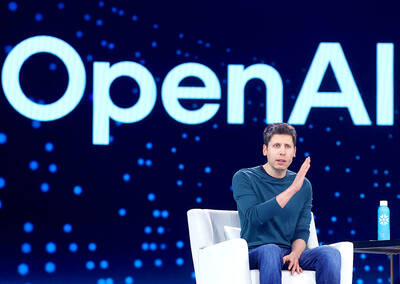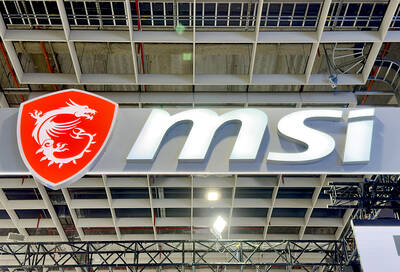Deutsche Bank AG, Europe’s once-dominant financial institution, threw in the towel on years of failed turnaround efforts and agreed to begin government-backed merger talks with Commerzbank AG.
By bowing to officials’ desire to forge a durable German lender with global reach out of two troubled firms, Deutsche Bank’s leaders are hardly putting their woes behind them: Massive job cuts, political turbulence, a weakening European economy, US probes into its dealings with US President Donald Trump and a herculean integration — not to mention skeptical clients and investors — lie ahead if they reach a deal.
“I have consistently stressed that consolidation in the German and European banking sector is an important topic for us,” Deutsche Bank chief executive officer Christian Sewing said in a letter to employees. “We have to assess how we want to play a part in shaping it.”
The companies confirmed the move to deeper discussions in statements on Sunday, capping months of speculation and behind-the-scenes talks with the German Ministry of Finance.
Both firms have struggled to restore revenue growth after deep cuts to their investment banking units. An economic slowdown that has pushed back expectations for higher interest rates has added urgency to the situation.
The ministry in an e-mailed statement said that it “notes” the decision of the banks to start open-ended talks and that it is in “regular contact” with all parties involved.
German Minister of Finance Olaf Scholz and German Deputy Minister of Finance Joerg Kukies have been favoring a deal to ensure the country has a lender to support the export-driven economy, people familiar with the matter have said.
Germany still owns a large stake in Commerzbank after a bailout.
The trade union for bank employees opposes a merger “in view of the risk to tens of thousands of jobs,” Jan Duscheck, who sits on Deutsche Bank’s supervisory board as labor representative, said in an e-mailed statement.
As many as 30,000 positions could be at risk in a merger, people familiar with the matter said.
The banks agreed to start formal talks after the government signaled that it would not stand in the way of necessary job and cost cuts, the people said.
Deutsche Bank expects to spend the next month in negotiations, said a person briefed on the talks.
A tie-up of the two 149-year-old firms would create Europe’s fourth-largest lender with assets of about 1.81 trillion euros (US$2.05 trillion).
The banks have a combined market value of about 25 billion euros, comparatively small because of the long slide in the shares. Both companies have lost more than 90 percent of their value from their peaks.
While it is not clear how a merger would be structured, Deutsche Bank is the larger of the two and would probably be the acquirer.
If a deal goes ahead, it might need to raise about 8 billion euros from shareholders or through sales of holdings, such as its DWS Group asset management business, DZ Bank analyst Christian Koch said.
“We will only pursue options that make economic sense, building on the progress we made in 2018,” Sewing said in his letter. “Our stated aim remains to be a global bank with a strong capital markets business — based on a leading position in our home market in Germany and in Europe, and with a global network.”
Proponents of a deal have said it would help the firms cut cost by eliminating branches and thousands of jobs, while pooling investment in information technology.
Critics have said a merger would lock both companies into several more years of restructuring, with high execution risks, and does not fix the real problems at Deutsche Bank’s securities unit.

DIVIDED VIEWS: Although the Fed agreed on holding rates steady, some officials see no rate cuts for this year, while 10 policymakers foresee two or more cuts There are a lot of unknowns about the outlook for the economy and interest rates, but US Federal Reserve Chair Jerome Powell signaled at least one thing seems certain: Higher prices are coming. Fed policymakers voted unanimously to hold interest rates steady at a range of 4.25 percent to 4.50 percent for a fourth straight meeting on Wednesday, as they await clarity on whether tariffs would leave a one-time or more lasting mark on inflation. Powell said it is still unclear how much of the bill would fall on the shoulders of consumers, but he expects to learn more about tariffs

Meta Platforms Inc offered US$100 million bonuses to OpenAI employees in an unsuccessful bid to poach the ChatGPT maker’s talent and strengthen its own generative artificial intelligence (AI) teams, OpenAI CEO Sam Altman has said. Facebook’s parent company — a competitor of OpenAI — also offered “giant” annual salaries exceeding US$100 million to OpenAI staffers, Altman said in an interview on the Uncapped with Jack Altman podcast released on Tuesday. “It is crazy,” Sam Altman told his brother Jack in the interview. “I’m really happy that at least so far none of our best people have decided to take them

PLANS: MSI is also planning to upgrade its service center in the Netherlands Micro-Star International Co (MSI, 微星) yesterday said it plans to set up a server assembly line at its Poland service center this year at the earliest. The computer and peripherals manufacturer expects that the new server assembly line would shorten transportation times in shipments to European countries, a company spokesperson told the Taipei Times by telephone. MSI manufactures motherboards, graphics cards, notebook computers, servers, optical storage devices and communication devices. The company operates plants in Taiwan and China, and runs a global network of service centers. The company is also considering upgrading its service center in the Netherlands into a

NOT JUSTIFIED: The bank’s governor said there would only be a rate cut if inflation falls below 1.5% and economic conditions deteriorate, which have not been detected The central bank yesterday kept its key interest rates unchanged for a fifth consecutive quarter, aligning with market expectations, while slightly lowering its inflation outlook amid signs of cooling price pressures. The move came after the US Federal Reserve held rates steady overnight, despite pressure from US President Donald Trump to cut borrowing costs. Central bank board members unanimously voted to maintain the discount rate at 2 percent, the secured loan rate at 2.375 percent and the overnight lending rate at 4.25 percent. “We consider the policy decision appropriate, although it suggests tightening leaning after factoring in slackening inflation and stable GDP growth,”